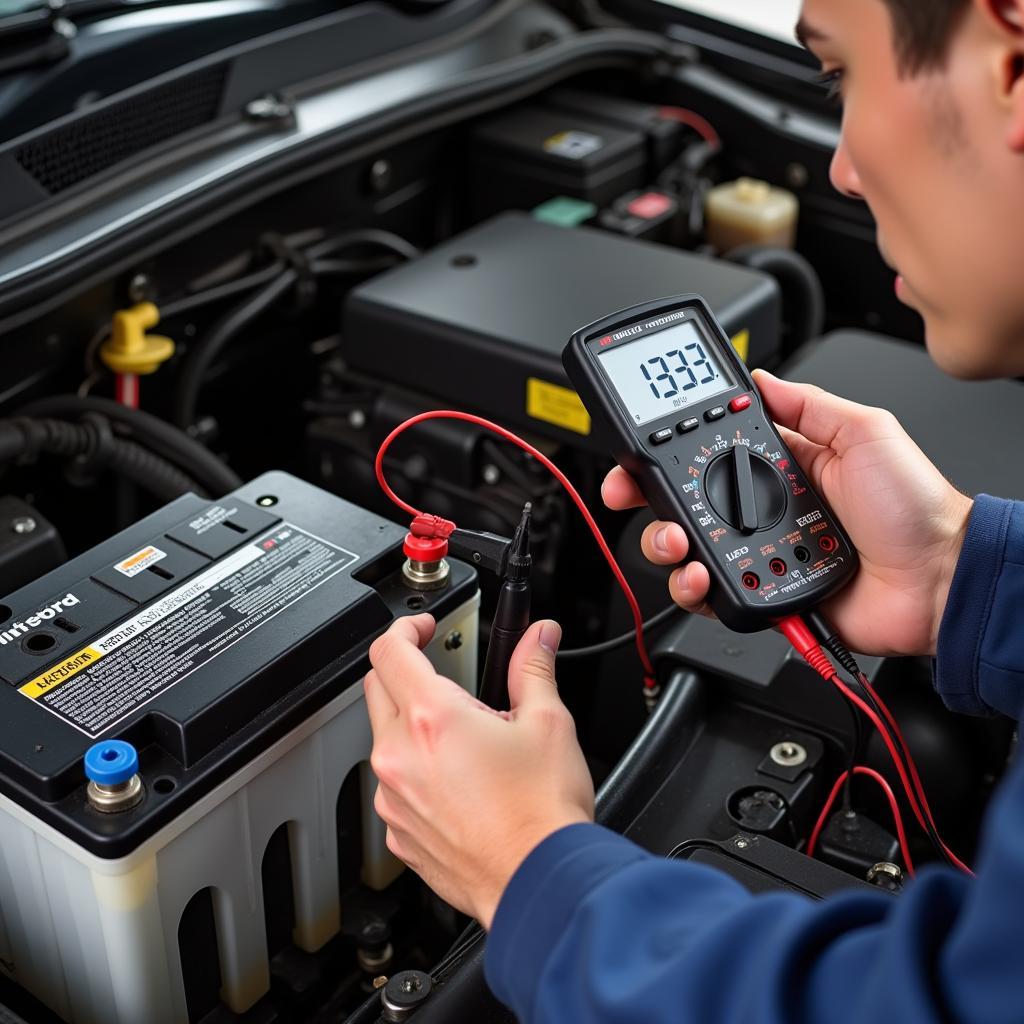The 2014 Ford Transit brake pad warning light is designed to alert you when your brake pads are worn and need replacing. This light can sometimes stay on even after you’ve installed new brake pads. This article will guide you through the process of resetting the 2014 Ford Transit brake pad warning light, offering both DIY solutions and professional advice. We’ll cover common causes, step-by-step instructions, and troubleshooting tips to get you back on the road safely.
Understanding the Brake Pad Warning Light
The brake pad warning light is a crucial safety feature. It’s triggered by a sensor embedded within the brake pad material. When the pad wears down to a certain point, the sensor comes into contact with the rotor, completing a circuit and illuminating the warning light on your dashboard. Ignoring this warning can lead to further damage and compromised braking performance.
How to Reset the 2014 Ford Transit Brake Pad Warning Light
There are several ways to reset the brake pad warning light on a 2014 Ford Transit. Let’s explore the most common methods:
1. Replacing the Brake Pads and Sensor
The most straightforward solution is to replace the brake pads and the sensor. This is the recommended course of action when the warning light comes on.
- Remove the Wheel: Securely lift the vehicle and remove the wheel where the worn brake pads are located.
- Remove the Caliper: Unbolt the caliper and carefully retract the piston.
- Replace the Pads and Sensor: Install the new brake pads and ensure the new sensor is correctly positioned.
- Reassemble the Caliper and Wheel: Bolt everything back together, ensuring all components are secure.
2. Manually Resetting the Sensor (Not Recommended)
In some cases, the sensor might be triggered prematurely. While manually resetting the sensor is possible, it’s generally not recommended unless you’re absolutely certain the brake pads are still within safe operating limits. Incorrectly resetting the sensor can lead to driving with dangerously worn brake pads.
3. Using Diagnostic Tools (Professional Approach)
Modern vehicles often require specialized diagnostic tools to reset certain systems, including the brake pad warning light. A professional mechanic will have access to these tools and can efficiently diagnose and reset the system. This approach ensures accuracy and avoids potential issues caused by incorrect manual resets.
Troubleshooting Persistent Warning Lights
If the warning light remains on after replacing the brake pads and sensor, there might be underlying issues:
- Faulty Sensor: The new sensor itself might be defective.
- Wiring Problems: Damaged or corroded wiring can prevent the system from resetting correctly.
- ABS Module Issues: Problems with the Anti-lock Braking System (ABS) module can sometimes affect the brake pad warning light.
“A common mistake DIYers make is not replacing the sensor along with the pads. This is crucial for proper system function,” says Michael Davis, a certified automotive technician with over 20 years of experience.
Conclusion
Resetting the 2014 Ford Transit brake pad warning light usually involves replacing the brake pads and sensor. While manual resets or diagnostic tools might be options, it’s always best to consult a qualified mechanic if you’re unsure. Addressing this issue promptly ensures your safety and prevents potential damage to your braking system. Remember, maintaining your brakes is paramount for safe driving. Don’t ignore the warning signs!
FAQ
- How often should I replace my brake pads? Brake pad lifespan varies depending on driving habits and conditions. Consult your owner’s manual for recommended intervals.
- Can I drive with the brake pad warning light on? It’s highly discouraged. The light indicates worn pads, compromising braking performance.
- Why is my brake pad warning light still on after replacing the pads? A faulty sensor, wiring issues, or problems with the ABS module could be the cause.
- How much does it cost to replace brake pads and sensors? Costs vary depending on location and service provider. Contact local mechanics for quotes.
- Is it difficult to replace brake pads myself? While possible for DIYers with some mechanical experience, it’s recommended to consult a professional if you’re uncertain.
- What tools do I need to replace brake pads? Basic hand tools, a jack, jack stands, and possibly specialized tools for caliper retraction are required.
- What are the signs of worn brake pads besides the warning light? Squealing or grinding noises, reduced braking responsiveness, and a spongy brake pedal are all indicators.


